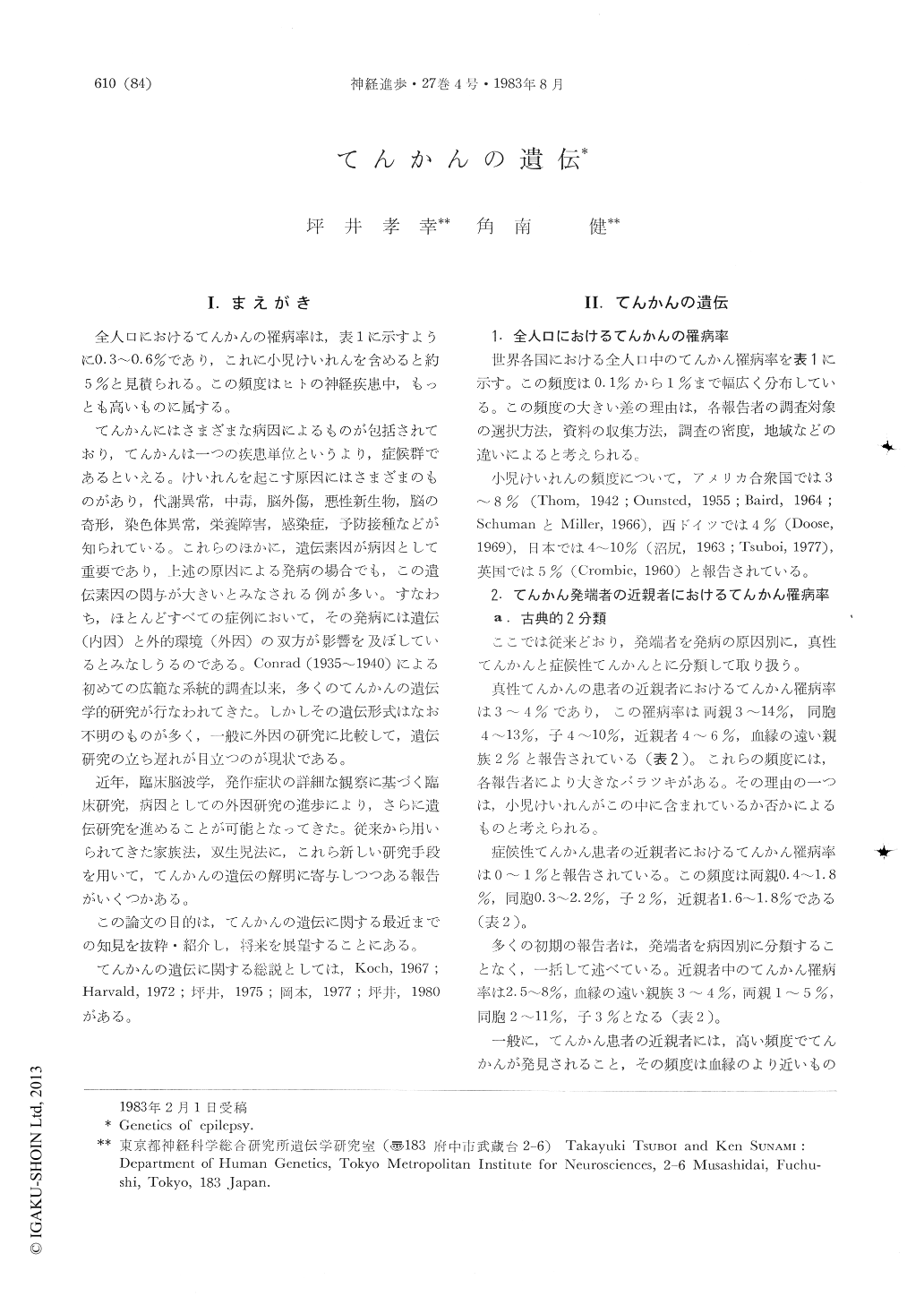Japanese
English
- 有料閲覧
- Abstract 文献概要
- 1ページ目 Look Inside
I.まえがき
全人口におけるてんかんの罹病率は,表1に示すように0.3〜0.6%であり,これに小児けいれんを含めると約5%と見積られる。この頻度はヒトの神経疾患中,もっとも高いものに属する。
てんかんにはさまざまな病因によるものが包括されており,てんかんは一つの疾患単位というより,症候群であるといえる。けいれんを起こす原因にはさまざまのものがあり,代謝異常,中毒,脳外傷,悪性新生物,脳の奇形,染色体異常,栄養障害,感染症,予防接種などが知られている。これらのほかに,遺伝素因が病因として重要であり,上述の原因による発病の場合でも,この遺伝素因の関与が大きいとみなされる例が多い。すなわち,ほとんどすべての症例において,その発病には遺伝(内因)と外的環境(外因)の双方が影響を及ぼしているとみなしうるのである。Conrad(1935〜1940)による初めての広範な系統的調査以来,多くのてんかんの遺伝学的研究が行なわれてきた。しかしその遺伝形式はなお不明のものが多く,一般に外因の研究に比較して,遺伝研究の立ち遅れが目立つのが現状である。
Abstract
The prevalence of epilepsies in the general population has hitherto been reported to range from 0.3% to 0.6%. The prevalence among near relatives was 3~41% in genuine epilepsy and 0~1 % in symptomatic epilepsy. Both prevalences, even in symptomatic epilepsy, were higher than that in the general population and were reduced according to the remoteness of the blood relation-ship. These results may be considered to suggest that the genetic effects play a important part in the outbreak of epilepsy. It has been shown that each type of epilepsy has a different degree of genetic effects.

Copyright © 1983, Igaku-Shoin Ltd. All rights reserved.


